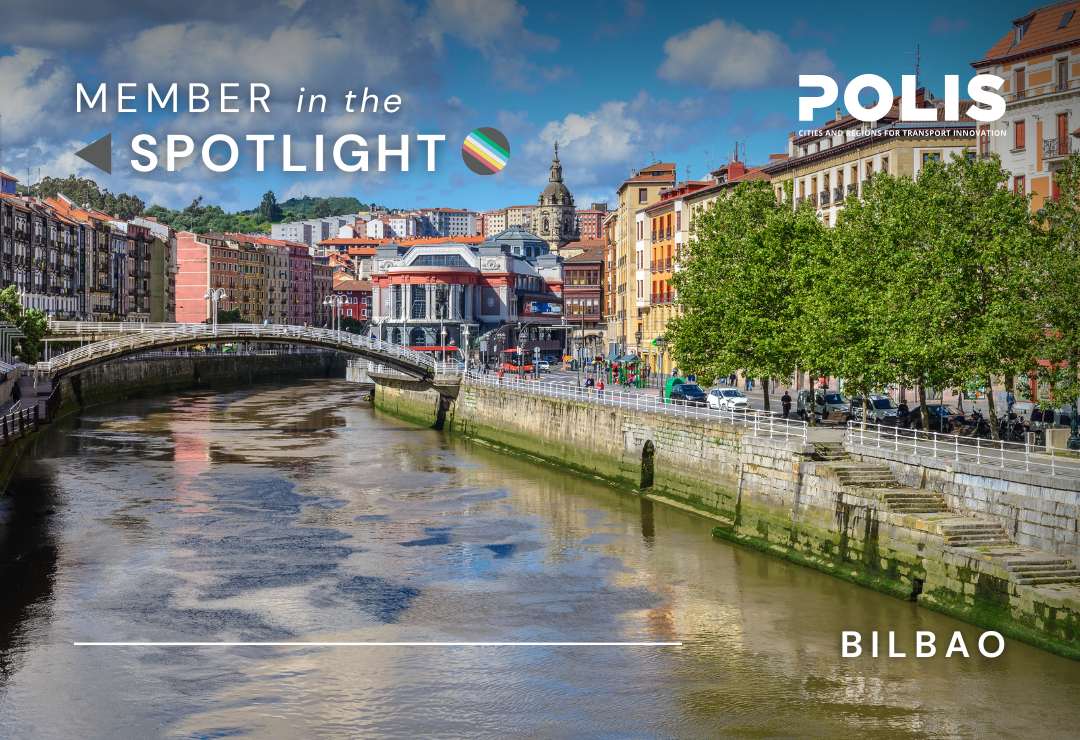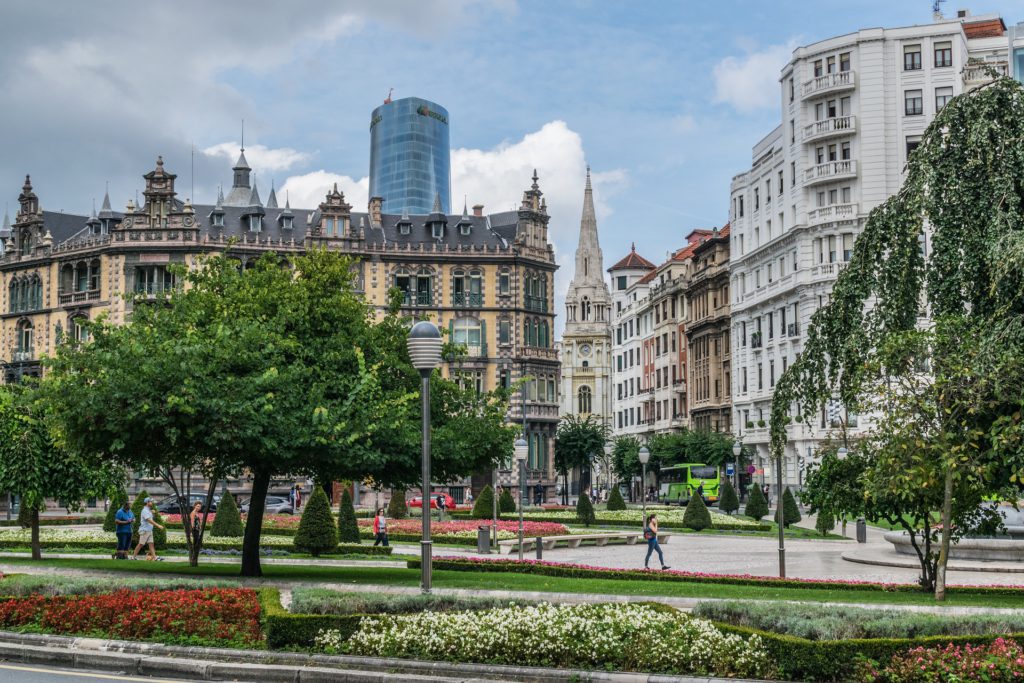Member in the Spotlight: Bilbao
This July, in honour of Disability Pride Month, we are thrilled to put the spotlight on POLIS member Bilbao, a city that has made continuous progress in fostering more inclusive and accessible spaces for people with disabilities.
POLIS' Member in the Spotlight feature is back this month with a special edition to celebrate Disability Pride Month. We shine a light on POLIS member Bilbao, which has made significant progress in shaping a city that is inclusive and accessible to people with disabilities.
From integrating inclusive mobility in policy planning to investing in public transport accessibility for people beyond physical barriers, from maintaining close relationships with local advocacy organisations to designing accessible pedestrian routes equipped with acoustic signal traffic lights and tactile street furniture, Bilbao reveals all on how to make truly sustainable and inclusive transport a reality.
POLIS: Can you describe Bilbao’s overall approach to inclusive mobility and how it fits within the city’s broader Sustainable Urban Mobility Plan (SUMP)? How do you ensure that accessibility is not treated as a separate issue but fully integrated into the city’s mobility policies?
Bilbao understands inclusive mobility as a right and not as an option, and therefore integrates it across all its public mobility policies, in line with our SUMP. Instead of treating accessibility as an isolated issue, it is incorporated into all projects from the design stage onwards: from public transport to pedestrian areas, cycling mobility, vertical mobility, or safe school surroundings.
The city is committed to mobility that excludes no one, with special attention to the elderly, people with disabilities, people with reduced mobility, and people with invisible functional diversity. For example, 100% of Bilbobus buses are accessible, and on-demand stops have been created to improve the safety of women and vulnerable groups. Urban design, municipal services, and awareness campaigns are part of a coherent strategy to ensure that everyone can move around the city independently, safely, and with dignity.
POLIS: Bilbao was recently awarded the Silver Award in the EU Capitals of Inclusion and Diversity for its work on social inclusion. What aspects of Bilbao’s mobility strategy do you think contributed most to this recognition, particularly in terms of accessibility for people with disabilities?

Cover of Bilbao Metro's Accessibility Brochure, available here.
The Silver Award granted by the European Commission to Bilbao in the ‘Capitals of Inclusion and Diversity Awards’ recognises a comprehensive urban approach, in which mobility has played a fundamental role. Among the actions that have contributed to this recognition are:
- The renewal of the Bilbobus fleet: it has 141 buses, 94 of which are hybrid and 26 electric, making it one of the most sustainable and efficient fleets in Europe. In addition, all are 100% accessible;
- The installation of lifts in most Bilbao Metro stations, as well as footbridges, ramps, and escalators in the districts with steep slopes;
- The design of accessible pedestrian routes, traffic lights with acoustic signals, and tactile elements in street furniture;
- The direct participation of associations of people with disabilities in the design and evaluation of projects.
This vision, which places accessibility at the heart of urban social justice, is what has made Bilbao a European benchmark.
POLIS: In your view, what are some of the most persistent challenges Bilbao has faced in making mobility more inclusive? Are there lessons learned or policy shifts that other cities and regions could benefit from?
One of the main challenges has been adapting a city with rugged terrain to the requirements of universal accessibility. In many cases, lack of space or inherited infrastructure has required innovative solutions, such as the implementation of vertical mobility or the redesign of pavements and shared pedestrian crossings. Another challenge has been to raise awareness of invisible disabilities and adapt services to people with specific sensory or cognitive needs. It has also been necessary to integrate gender and intersectionality perspectives into mobility policies.
The main lessons learned are clear: inclusion must be planned from the outset; citizen participation is not optional but essential; and inter-institutional collaboration allows problems to be tackled more effectively. Likewise, measures such as limiting the speed to 30 km/h throughout the urban area have contributed not only to reducing accidents but also to improving acoustic comfort, especially for people with hypersensitivity.
POLIS: Bilbao has made significant investments in public transport accessibility: as you mentioned, 100% of Bilbobus vehicles are now low-floor, and most Metro Bilbao stations are equipped with elevators. What are the city’s current priorities for making public transport more inclusive, for example, for people with visual impairments or invisible disabilities?
Bilbao is currently focusing its efforts on ensuring universal accessibility beyond physical barriers. This includes actions aimed at people with visual or cognitive disabilities or neurodivergences.
Some priorities include:
- The installation of new bus shelters with accessible digital screens and clear language;
- The incorporation of pictograms and cognitive signage at stations and stops;
- The exploration of auditory and vibratory guidance technologies for people with low vision;
- The training of transport staff in inclusive care;
- The continuous improvement of accessibility features on Bilbobus and other transport networks.
All this is to ensure that public transport is safe, comprehensible, and comfortable for everyone.

Bilbao understands inclusive mobility as a right and not as an option, and therefore integrates it across all its public mobility policies, in line with their SUMP. Photo credit: City of Bilbao
POLIS: How does Bilbao work with local organisations representing people with disabilities when planning new mobility infrastructure or services? How does their input shape decisions, and is there any ongoing research or feedback mechanism in place?
Bilbao maintains close and structured collaboration with organisations representing people with disabilities through the Municipal Disability Council. These entities participate in the planning and design phases, all through to the implementation and evaluation of projects, contributing direct experience and technical knowledge. In addition, the City Council organises participatory workshops, on-site accessibility tests and public consultations. Pilot projects are also currently being developed with universities and technology centres to evaluate accessibility in real time and improve service quality.
This model of collaborative governance has proven to be effective and replicable, as it turns participation into a tool for urban design rather than an administrative formality.
POLIS: Bilbao is part of the WHO’s Global Network for Age-Friendly Cities and has been consistently implementing an associated strategy to promote an age-friendly and accessible city for all users, specifically focusing on senior citizens. Can you tell us more how the strategy was developed and what kind of measures were taken to improve the daily mobility experience of people with reduced mobility?
Bilbao has been part of this WHO Global Network since 2010. This membership has led to a comprehensive municipal strategy developed with the participation of older people, older people's associations, gerontology experts and municipal technical staff.
Among the most relevant measures are:
- The installation of 131 weather shelters in the city (65 indoor and 66 outdoor);
- The expansion of vertical mobility elements to facilitate connections between neighbourhoods;
- The increase in benches, shaded areas, and public fountains;
- The adaptation of public transport with universal accessibility and priority for older people;
- The design of safe and comfortable environments for walking, including accessible pedestrian routes.
These actions not only benefit older people, but also build a more friendly city for all ages.
POLIS: July is celebrated annually as Disability Pride Month. Given Bilbao’s continuous progress in shaping a city that is inclusive and accessible to people with disabilities, what advice would you give to other cities and regions aiming to do the same?
Our main recommendation is to integrate inclusion from the outset of any public policy, rather than as an afterthought. It is essential to design with a rights-based approach and recognise functional diversity as an inherent part of citizenship. Listening to communities, establishing real participation mechanisms, promoting universal accessibility as a regulatory criterion, and combining technological solutions with urban planning measures are key to moving forward. In addition, it is important to generate an institutional culture around accessibility: training staff, measuring impact, and correcting errors.
Inclusion not only improves mobility, but it also improves the democratic quality of the city.


